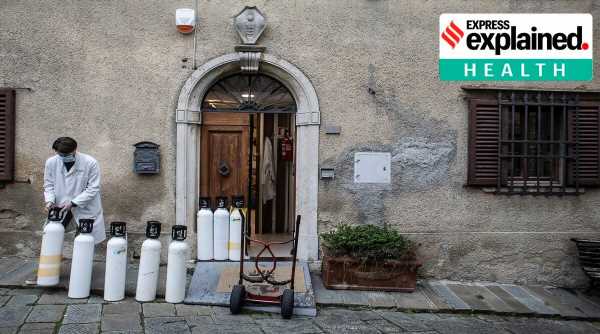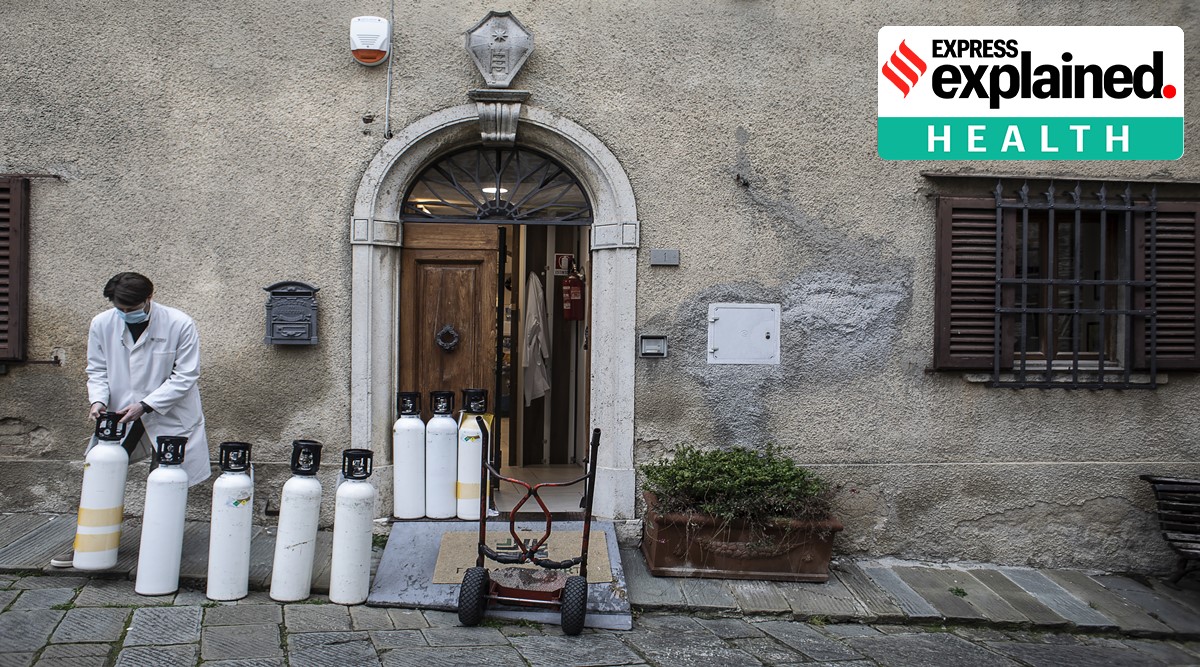The shortages affect patients with every kind of respiratory ailment requiring oxygen, not just those with Covid.
The latest horror of the pandemic is that large numbers of people around the world are dying for lack of access to medical oxygen, especially in India. Each day, tens of thousands of people are admitted to hospitals with Covid-19, driving the demand for the oxygen far beyond the supply.
Oxygen makes up 21% of the atmosphere. A handful of companies capture and purify it in bulk, but they sell most of it to industry. Many poorer parts of the world lack the infrastructure needed to deliver or make use of the medical grade supplies those companies sell, which are designed to be delivered via pipes to hospital rooms.
Some hospitals and clinics have machines that produce purified oxygen at a much smaller scale, but they are in short supply. So many hospitals and patients in poor countries and in remote areas rely on the most expensive option: oxygen tanks that have became scarce in the countries hit hardest by the virus.
The shortages affect patients with every kind of respiratory ailment requiring oxygen, not just those with Covid.
The World Health Organization said in February that $1.6 billion would be needed to remedy the oxygen shortage for a year; now that estimate is up to $6.5 billion. Efforts to raise that money have faltered, although it is a small fraction of what has been spent on vaccines and financial support for businesses and workers.
Here are answers to some of the questions being asked about the oxygen crisis.
How did it get so bad, so quickly?
Given the enormous, and obvious, need for oxygen during a pandemic affecting the respiratory system, the crisis should not have come as a surprise. But in a year when policymakers lurched from one pandemic challenge to another — PPE shortages, lockdowns, the threat of economic collapse, remote schooling, therapeutics, vaccines — oxygen supply never rose to the top of the list.
“Oxygen hasn’t been sufficiently prioritized,” said Robert Matiru, program director at Unitaid, one of the global public health groups working to address the shortage with the WHO.
Even before the pandemic, some poorer regions were unable to ensure adequate supplies. But it was not until early this year, when lethal oxygen shortages hit northern Brazil, Mexico and elsewhere, that it became clear that what had been seen as a potential problem was becoming a dire emergency. The WHO created an emergency task force on the oxygen shortage and called for money to address it.
Then the pandemic surged in India, where it had been relatively contained, pushing oxygen supplies to the center of the world’s attention. India’s official count of new coronavirus infections leapt from an average of about 11,000 a day in mid-February to a daily-average of more than 370,000 in the past week — and experts say the true figure is far higher.
In the past two months, the unmet, global need for medical oxygen has more than tripled, from less than 9 million cubic meters a day to more than 28 million, according to a coalition of aid groups that are tracking the crisis.
About half of that unmet need is in India. And health advocates warn that the calamity there could be repeated in other countries.
How is oxygen made and supplied?
In wealthy countries, hospitals generally rely on tanker trucks to make bulk deliveries of liquid oxygen, far denser than regular air, that is stored in large containers. A system of pipes draws out the gas, allows it to expand to ordinary density and delivers it to each bedside.
This is by far the most cost-effective way of supplying oxygen, and companies that supply bulk oxygen have enough production capacity to meet the global medical demand for it. In just the past few weeks, some of them have begun ramping up their production of medical gas by diverting some from industry, whose gas has somewhat different requirements.
India’s government has ordered the producers there to temporarily direct all of their oxygen output to medical needs.
But many hospitals around the world are not equipped to make use of liquid oxygen, lacking the pipes to distribute it to patients, and there is no delivery system in place for many remote locations.
Oxygen can also be obtained in less dense gaseous form, in cylinders that need to be refilled more often. This is often the most expensive option — it can cost 10 times as much as bulk liquid oxygen — but it is the only one available to many parts of the developing world.
In many countries, people have scrambled to buy or refill such cylinders for their family members, but demand has far outstripped supply.
Some hospitals have their own plants to extract oxygen from the air, a technology known as pressure swing absorption, or PSA. But the systems are expensive, and a hospital that buys one would also have to install a system of pipes to deliver the oxygen to bedsides.
There are also small devices called oxygen concentrators that can serve a single patient or a few. Although one can cost several hundred dollars, a high hurdle in poorer countries, demand for them has soared faster than manufacturers can produce them.
What is needed to solve this crisis?
Money and time.
Public health advocates say hospitals should have PSA plants and the piping to go with them, but in poor countries that solution can be cost prohibitive, achievable only with international aid. India’s government plans to install the equipment in hundreds of hospitals, but that could take months.
Companies that make PSA plants and oxygen concentrators are ramping up production around the world, but that, too, takes time.
Bulk oxygen producers and governments are still trying to adjust supply chains to get the lifesaving gas where it is needed most. In India, the government is using trains and even military transport planes to get oxygen to the sick.
If enough money were available, governments and international groups could have advance-purchase agreements with bulk suppliers, and emergency stores of oxygen could be stationed in various parts of the world and deployed as needed.
If nothing else, the past few months have made clear the difficulty of trying to increase oxygen supplies on short notice, amid a crisis.
Instead, Matiru said, the world should invest in preparation, “so that if there’s a surge we can press ‘Go.’”
Source: Read Full Article


